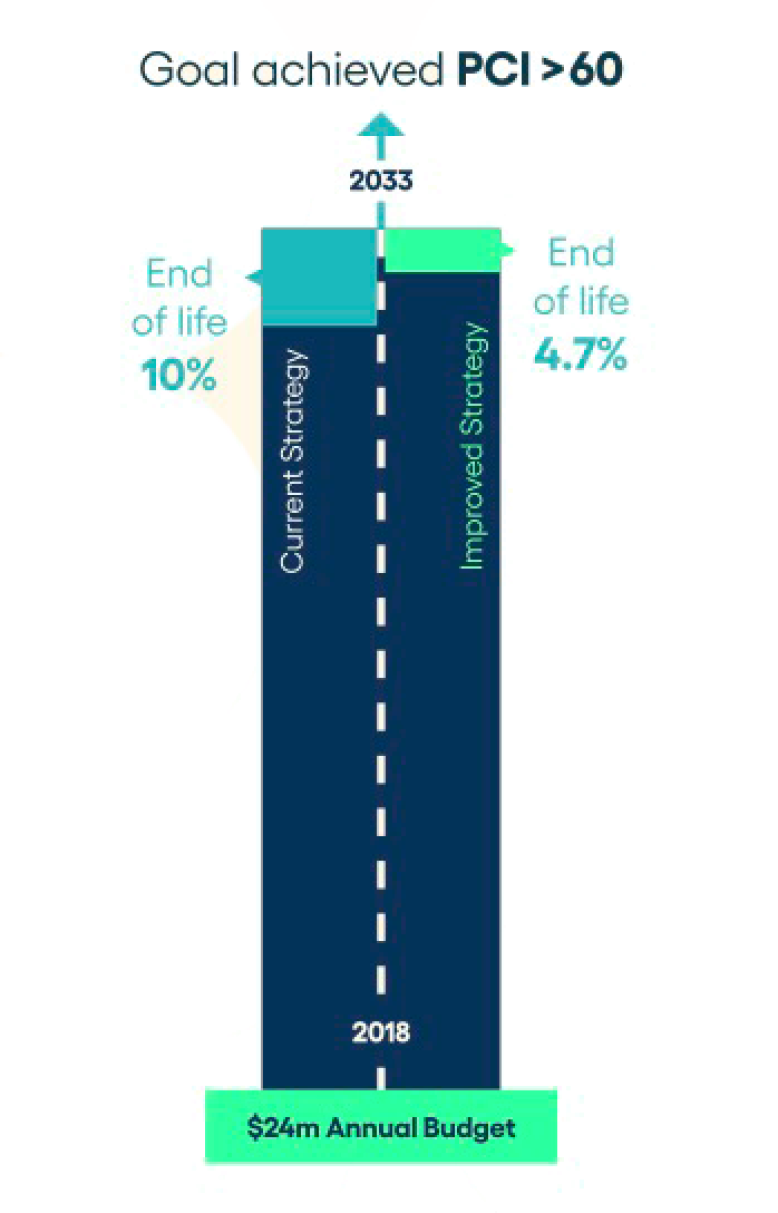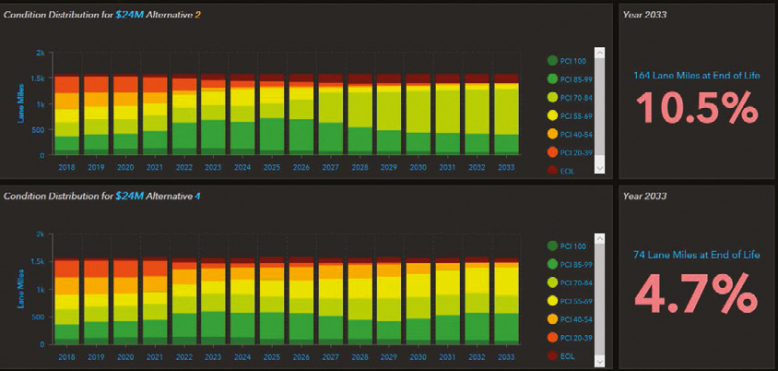The challenge and opportunity
Roads are often a top priority for taxpayers. When roads are in poor condition, they negatively impact motorists, cyclists and pedestrians because they play an essential role in the overall productivity of the city. That’s why, when the City of Topeka, Kansas informed its Public Works department that the 0.5 cent retail sales tax used to fund its pavement renewal projects was up for re-evaluation, in-house experts recognized the importance of proving its go-forward financial requirements.
Adding to their challenge, Public Works was tasked with improving the average PCI (Pavement Condition Index) from 55 to 60 over the next 10 years. They were also asked to demonstrate what PCI could be achieved with an annual budget increase to $31M.
Results
-
Spent $0 on new data. Leveraged existing pavement condition data and existing pavement work order data.
-
Clearly demonstrated that an annual budget of $24M along with treatment strategy improvements would meet the outlined goals and preserve high-traffic streets, with only 4.7% of roads reaching End of Life.
-
Revealed that an increase to $31M per annum would yield only a 3-point overall improvement in condition score.
-
Achieved actionable insights within eight weeks of launching its pilot with Brightly.
-
Produced a street forecasting Esri Story Map to illustrate the decision-making process to City Council and taxpayers.
The software gave us quick, actionable insights and a robust, evidence-based forecast of our future actions and spend to achieve pavement condition goals. Importantly, this was done leveraging existing data, efficiently and affordably.
Jason Peek
Public Works Director

Brightly and the City of Topeka
Jason Peek, Director of Public Works, and his staff engaged Brightly to better understand their long-range pavement condition and funding scenarios. Leveraging existing pavement inventory and condition data, the team used Predictor to model several different funding scenarios and their resulting PCI ratings and levels of service over a 15-year time period.
Through the Predictor modeling process City leaders found:
-
Should the 0.5-cent sales tax expire roads would rapidly deteriorate, resulting in 19.4% (304 lane miles) nearing End of Life condition by 2033.
-
At a minimum, the City must maintain the existing funding level of $24M in order to reach target average PCI goals.
-
While the $24M achieves the target average PCI, existing treatment strategies will result in over 10% of City streets at End of Life condition by 2033.
-
Strategic modifications to the treatment strategies modeled within Predictor revealed that the PCI target could be surpassed while reducing the percentage
of roads at End of Life to 4.7%, all within the existing $24M annual budget.
• Lastly, the models uncovered that an annual investment of $31M would only yield a 3-point improvement in average PCI.
The team then decided to improve their treatment strategies within the same budget constraints ($24M per annum) and arrived at the optimal combination of investment and PCI. The City of Topeka’s GIS staff produced an Esri Story Map to quickly and powerfully communicate each simulation to the City Council and the public.

Results
Using our strategic asset management tool, Brightly Predictor, Topeka proved:
-
They could use their annual budget of $24 million to improve their PCI and lower the percentage of roads reaching end of life from 10% to 4.7%
-
An annual investment of $31 million would only yield a 3-point improvement in average PCI
Vitals
Total area of 61.5 square miles

